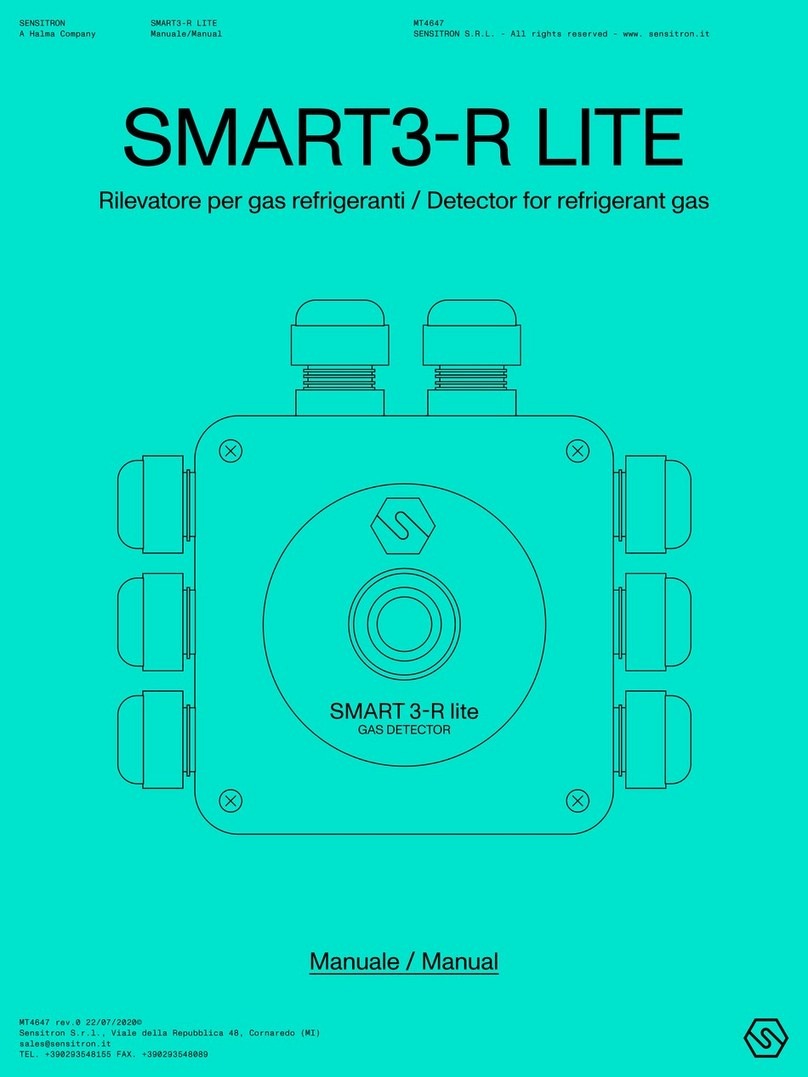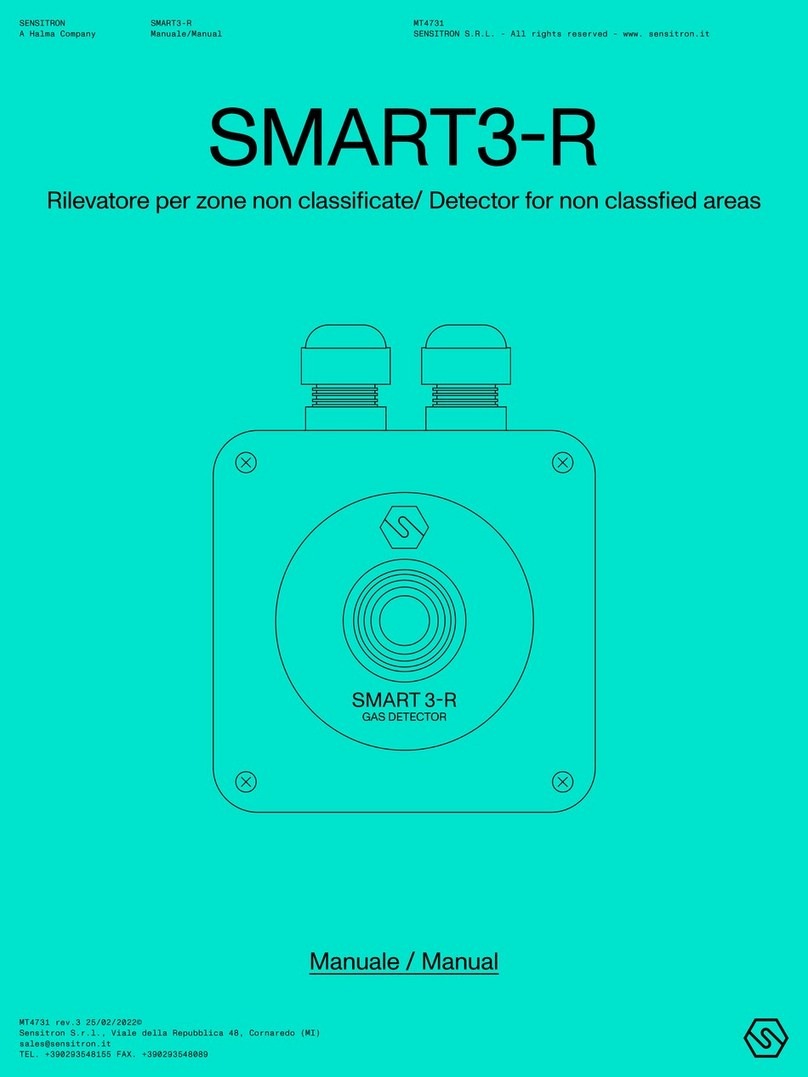8
Table of contents
Type 1 Intrinsically safe toxic and oxygen gas detector . . . . . . . .9
1. Introduction ......................................................................................9
2. Installation ......................................................................................10
3. Operation........................................................................................13
4. Specification...................................................................................16
Type 2 Flameproof toxic and oxygen gas detector . . . . . . . . . . .17
1. Introduction ....................................................................................17
2. Installation ......................................................................................18
3. Operation........................................................................................21
4. Specification...................................................................................24
Type 3 Flameproof flammable gas detector . . . . . . . . . . . . . . . . .25
1. Introduction ....................................................................................25
2. Installation ......................................................................................26
3. Operation........................................................................................29
4. Specification...................................................................................32
Type 4 Flameproof high temperature flammable gas detector . .33
1. Introduction ....................................................................................33
2. Installation ......................................................................................34
3. Operation........................................................................................37
4. Specification...................................................................................40
Type 5 Flameproof flammable gas detector with 420mA output41
1. Introduction ....................................................................................41
2. Installation ......................................................................................42
3. Operation........................................................................................45
4. Specification...................................................................................49
Type 6 Flameproof thermal conductivity type gas detector . . . .50
1. Introduction ....................................................................................50
2. Installation ......................................................................................51
3. Operation........................................................................................54
4. Specification...................................................................................58
Spare parts and accessories . . . . . . . . . . . . . . . . . . . . . . . . . . . . . .59
Appendix: Sensor limitations . . . . . . . . . . . . . . . . . . . . . . . . . . . . . .61
Warranty . . . . . . . . . . . . . . . . . . . . . . . . . . . . . . . . . . . . . . . . . . . . . . .62




























